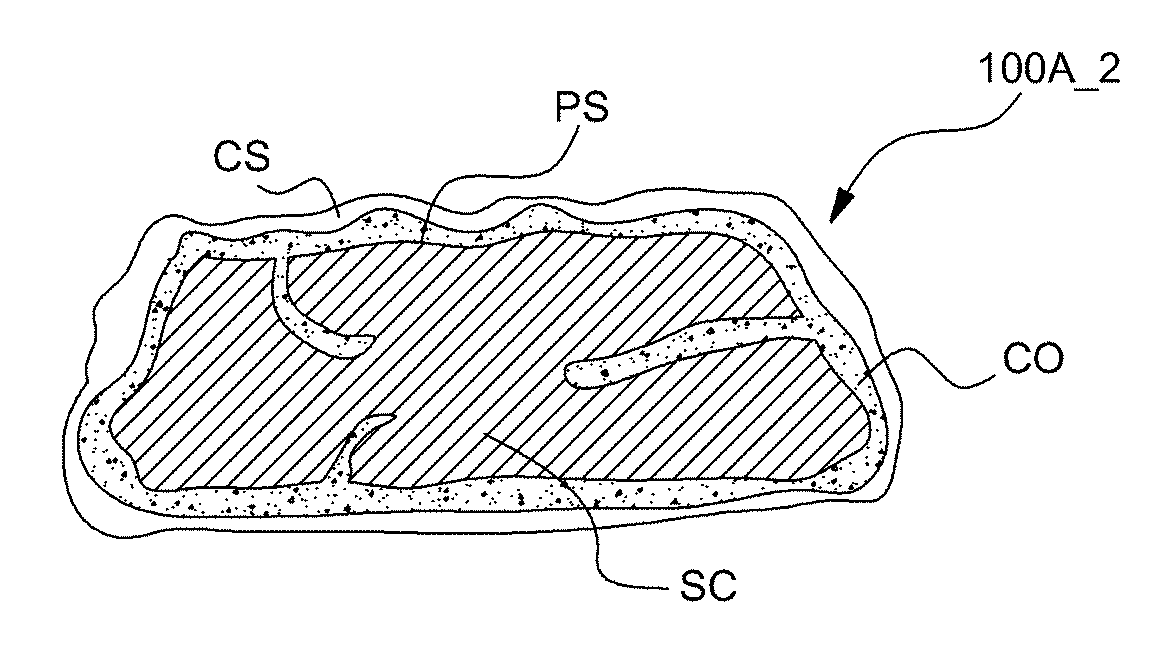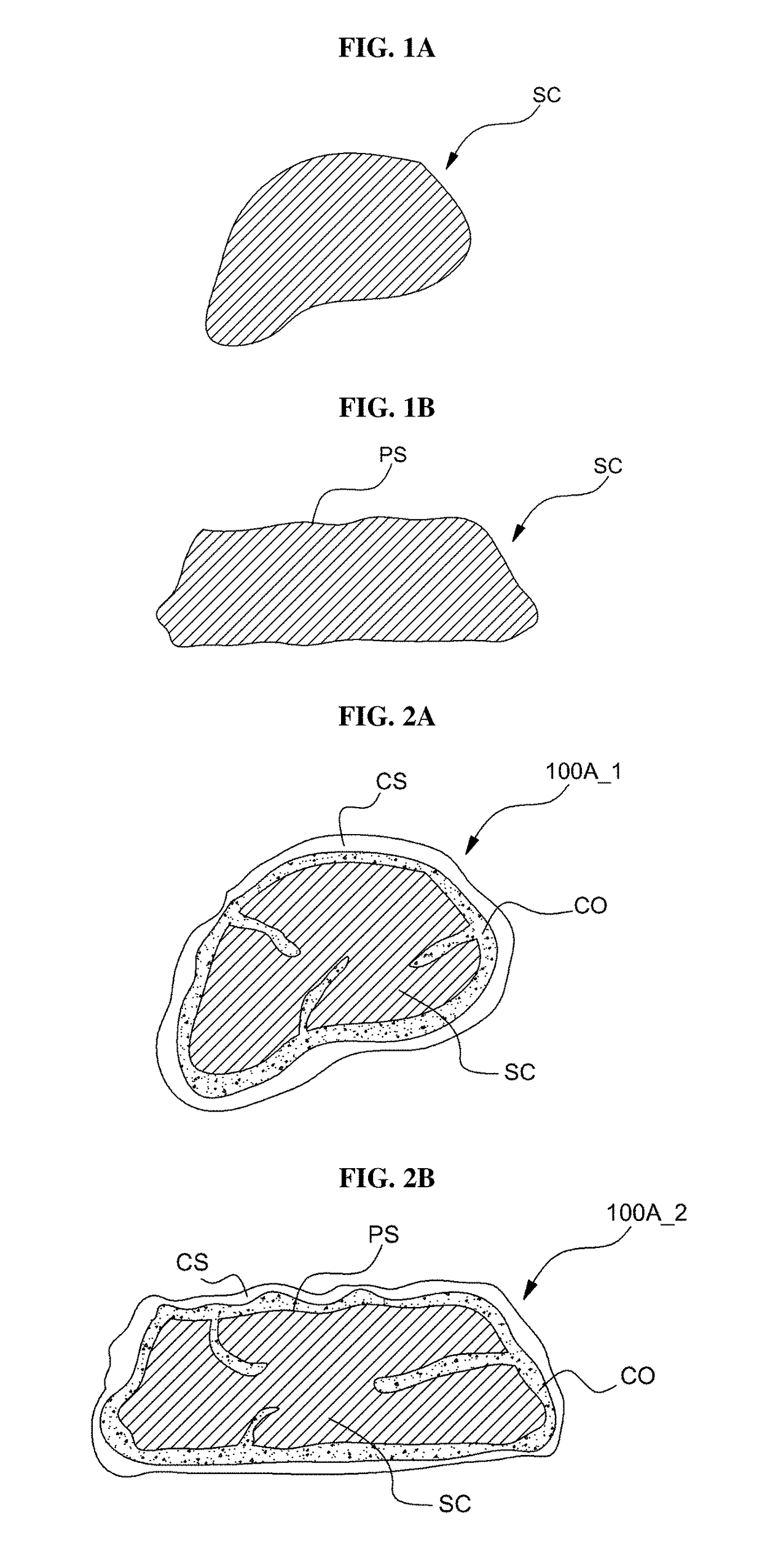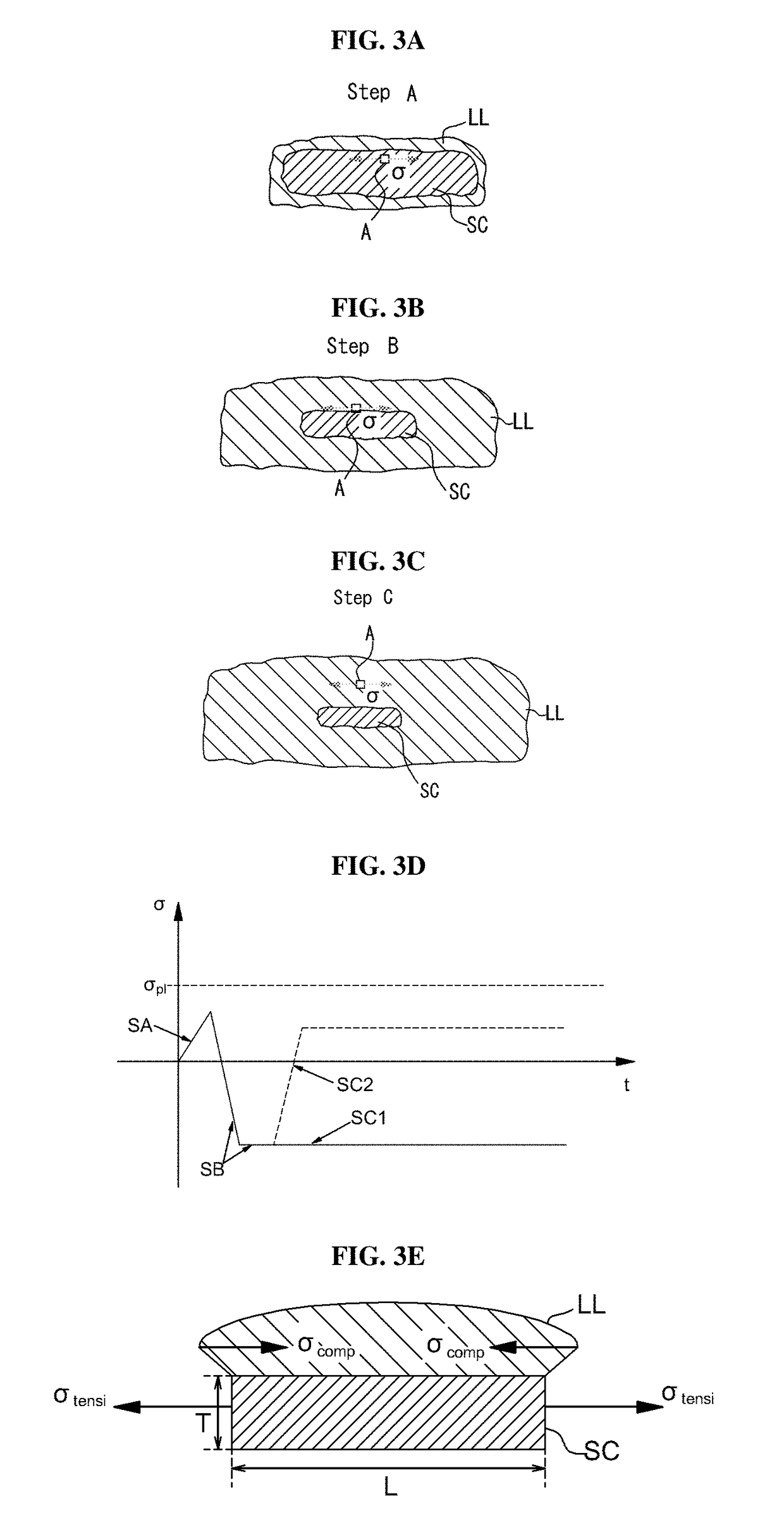Method for preparing silicon-based active material particles for secondary battery and silicon-based active material particles
- Summary
- Abstract
- Description
- Claims
- Application Information
AI Technical Summary
Benefits of technology
Problems solved by technology
Method used
Image
Examples
experimental example 1
[0071]A commercially available polysilicon powder having an average diameter of about 5 μm was prepared, and the polysilicon powder was dispersed in an oxidant solvent of 100% ethanol to prepare a pre-pulverization mixture. Silicon-based active material particles having circularities of about 0.4, 0.5, 0.6, 0.7, 0.8, and 0.9 were prepared by repeating a mill-pulverizing operation with a controlled time for applying compression and shearing stresses to the pre-pulverization mixture for at least once. According to a comparative embodiment, a spherical silicon-based active material particle having a circularity of 0.95 or higher include a silicon oxide layer formed on a spherical commercial silicon particle by thermal oxidation.
[0072]FIG. 6 is a graph showing changes of average particle sizes of respective samples when the mill-pulverizing process is repeated twice, four times, six times, and eight times, respectively. The curve La indicates the change of the maximum particle size with...
experimental example 2
[0077]Similar to the Experimental Example 1, poly-silicon powder having an average diameter of about 5 μm was prepared, and pre-pulverization mixtures were prepared by dispersing the poly-silicon powers in 100% mol of ethanol, a mixed solution of 75% mol of ethanol and 25% mol of water (distilled water), a mixed solution of 50% mol of ethanol and 50% mol of water, a mixed solution of 25% mol of ethanol and 75% mol of water, and 100% mol of water. Each of the pre-pulverization mixtures was subjected to time-controlled mill-pulverizing operation once to control the oxygen content thereof. The average circularity was 0.6. The samples prepared using the various above-stated oxidant solvents according to an embodiment of the present invention are sequentially referred to as samples a0, b0, c0, d0 and e0.
[0078]Next, an aging operation for placing these samples in a fresh oxidant solvent of the same kind as that of the oxidant solvent applied to these samples and dispersing and stirring th...
PUM
 Login to View More
Login to View More Abstract
Description
Claims
Application Information
 Login to View More
Login to View More - R&D
- Intellectual Property
- Life Sciences
- Materials
- Tech Scout
- Unparalleled Data Quality
- Higher Quality Content
- 60% Fewer Hallucinations
Browse by: Latest US Patents, China's latest patents, Technical Efficacy Thesaurus, Application Domain, Technology Topic, Popular Technical Reports.
© 2025 PatSnap. All rights reserved.Legal|Privacy policy|Modern Slavery Act Transparency Statement|Sitemap|About US| Contact US: help@patsnap.com



